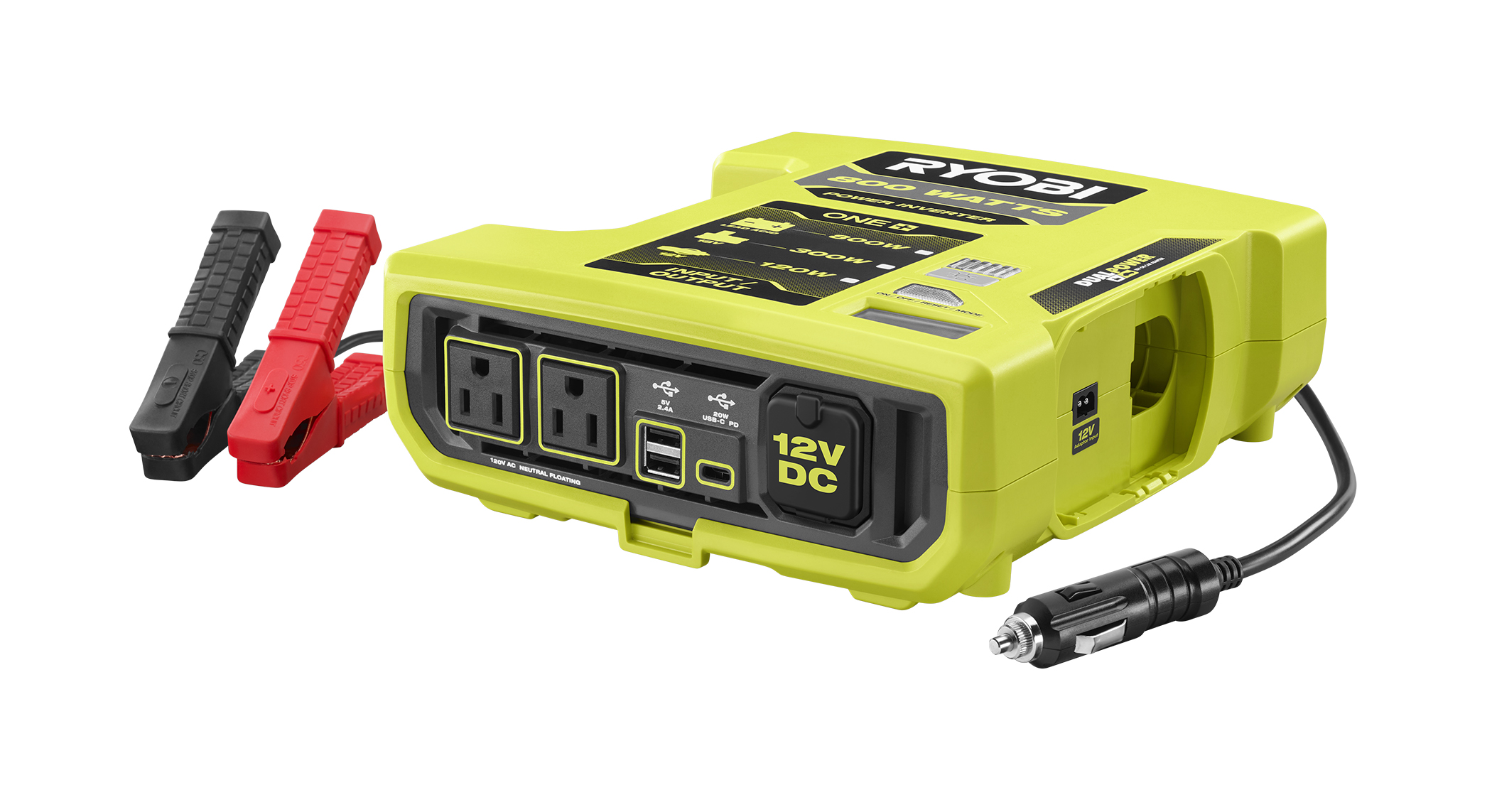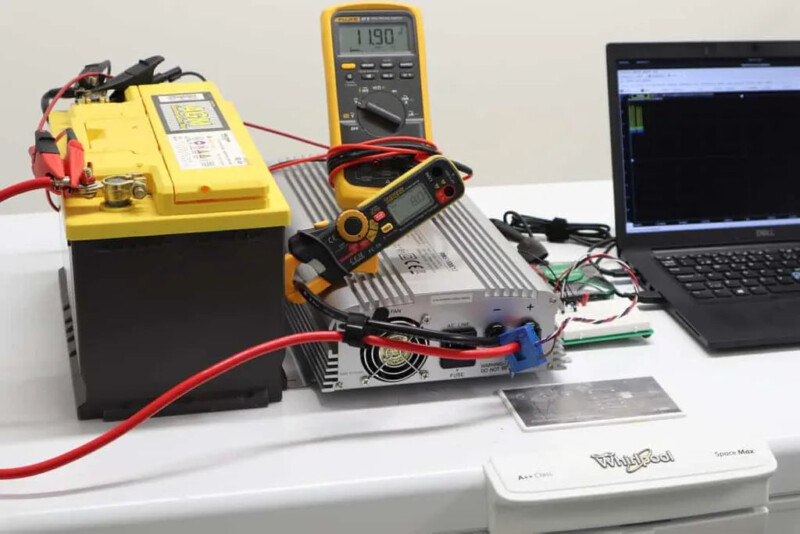Yes, a car power inverter can run a refrigerator. The inverter must match the refrigerator’s power requirements.
A car power inverter converts DC power from a car battery to AC power, which household appliances use. This allows various electrical devices, including refrigerators, to operate in vehicles. Ensuring the inverter’s wattage matches or exceeds the refrigerator’s power needs is crucial.
For most mini-fridges, a 1000-watt inverter suffices, while larger refrigerators might need a 1500-watt or higher inverter. Consider both continuous and surge wattage requirements. Proper setup ensures efficient power conversion and safe operation.
This setup is beneficial for road trips, camping, and emergency situations, providing convenience and functionality on the go. Always check your refrigerator’s power specifications before use.

Credit: leaptrend.com
Power Requirements
To understand if a car power inverter can run a refrigerator, you must first know the power requirements. Both the refrigerator’s wattage and the inverter’s capacity play a crucial role. Let’s break down these components for better clarity.
Refrigerator Wattage
The wattage of a refrigerator varies by model and size. Small refrigerators, like mini-fridges, usually require between 100 to 200 watts. Standard household refrigerators typically need 500 to 800 watts. You can find this information on the refrigerator’s nameplate or user manual.
For example, a mini-fridge might list power usage as 120 watts. That means it consumes 120 watts of power per hour when running.
Inverter Capacity
An inverter’s capacity indicates how much power it can provide. This is usually measured in watts. To run a refrigerator, the inverter must supply at least the same wattage as the refrigerator needs. For instance, if your refrigerator needs 500 watts, the inverter must provide at least 500 watts.
Here is a simple table to illustrate the matching of refrigerator wattage and inverter capacity:
| Refrigerator Wattage | Inverter Capacity |
|---|---|
| 100 – 200 watts (Mini-Fridge) | 200 watts or more |
| 500 – 800 watts (Standard Fridge) | 800 watts or more |
Important Note: Always choose an inverter with a capacity higher than the refrigerator’s wattage. This ensures stable performance and avoids overloading the inverter.
| You May Like: Store a Bestek Power Inverter During the Off-Season?
Types Of Car Inverters
Car inverters are essential for powering household appliances on the road. The type of inverter you choose affects the performance of your devices.
Let’s explore the two main types of car inverters: Modified Sine Wave Inverters and Pure Sine Wave Inverters.
Modified Sine Wave Inverters
Modified Sine Wave Inverters generate a simple waveform. This type is less expensive and easier to produce. They can run basic household appliances like lights, fans, and some power tools.
Advantages:
- Lower cost
- Good for basic appliances
- Easy to find
Disadvantages:
- Less efficient
- May cause noise in some devices
- Not suitable for sensitive electronics
Pure Sine Wave Inverters
Pure Sine Wave Inverters produce a smoother, more consistent waveform. This type is ideal for sensitive electronics and high-energy appliances like refrigerators.
Advantages:
- More efficient
- Better for sensitive electronics
- Reduces noise in devices
Disadvantages:
- Higher cost
- More complex technology
- Heavier and larger
Choosing the right inverter depends on your needs. For a refrigerator, a Pure Sine Wave Inverter is usually the best choice.
Calculating Power Needs
Understanding how much power your refrigerator needs is crucial. Calculating power needs helps determine if a car power inverter can run a refrigerator. This involves understanding both starting and running wattage, as well as battery capacity.
Starting Vs Running Wattage
Refrigerators use more power when starting. This is known as starting wattage. Running wattage is the power used to keep the refrigerator running.
For example, a refrigerator might need 1200 watts to start but only 200 watts to run. You can find this information in the refrigerator’s manual or on a label inside the appliance.
| Power Type | Wattage |
|---|---|
| Starting Wattage | 1200 watts |
| Running Wattage | 200 watts |
Battery Capacity
The battery capacity of your car affects how long it can run a refrigerator. This is usually measured in amp-hours (Ah).
To calculate, you need to know the battery voltage and the running wattage of the refrigerator. Use this formula:
Battery Capacity (Ah) = (Running Wattage / Battery Voltage) x HoursFor a 12-volt battery and a refrigerator needing 200 watts:
Battery Capacity (Ah) = (200W / 12V) x HoursSo, to run the refrigerator for 5 hours:
Battery Capacity (Ah) = (200W / 12V) x 5 = 83.33 AhMake sure your car battery has enough capacity. You don’t want to drain it completely.
Also, consider other power needs in your car. Lights, radio, and other devices use power too.

Credit: ryobitools.com
Safety Considerations
Using a car power inverter to run a refrigerator requires careful attention. Safety should always be your top priority. In this section, we’ll cover key safety considerations.
Overloading Risks
Overloading a car power inverter can cause serious problems. Ensure the inverter’s wattage meets your refrigerator’s power needs. Check your refrigerator’s manual for its wattage rating.
If the refrigerator requires 500 watts, your inverter should handle at least 600 watts. This extra capacity accounts for startup surges. Startup surges happen when the refrigerator starts running. They can briefly use more power than usual.
| Appliance | Typical Wattage | Inverter Wattage Needed |
|---|---|---|
| Mini Fridge | 70-100 watts | 150-200 watts |
| Full-size Refrigerator | 300-800 watts | 600-1200 watts |
Proper Ventilation
Car power inverters generate heat when in use. Proper ventilation is crucial to prevent overheating. Place the inverter in a well-ventilated area.
Avoid placing it in confined spaces like the glove compartment. Overheating can damage the inverter and the refrigerator. It can also pose a fire hazard. Make sure air can flow freely around the inverter.
Tips for Proper Ventilation:
- Keep the inverter away from direct sunlight.
- Ensure at least 2 inches of space around the inverter.
- Use an inverter with a built-in cooling fan.
| You May Like: How Long Will the Battery Last in a Power Inverter?
Installation Tips
Installing a car power inverter to run a refrigerator can be tricky. Follow these tips to ensure a smooth setup. Proper installation will ensure your refrigerator runs efficiently.
Connecting The Inverter
First, ensure your car battery is in good condition. A weak battery may not support the inverter.
- Choose an Inverter: Select an inverter with the right wattage. A refrigerator typically needs 1000-1500 watts.
- Check Connections: Connect the inverter directly to the car battery. Use heavy-duty cables to prevent overheating.
- Secure Connections: Tighten the connections firmly. Loose connections can cause power loss.
Once connected, test the inverter. Turn it on to ensure it works properly.
Positioning The Refrigerator
Place the refrigerator in a stable position inside your vehicle. This ensures it does not move during travel.
- Find a Flat Surface: Position the refrigerator on a flat, stable surface.
- Secure the Refrigerator: Use straps to secure the refrigerator. This prevents it from tipping over.
- Ensure Ventilation: Leave space around the refrigerator for ventilation. This helps in maintaining efficiency.
Regularly check the setup to ensure all connections remain tight and secure.
| Task | Importance |
|---|---|
| Selecting the right inverter | High |
| Securing the refrigerator | Medium |
| Ensuring ventilation | High |
Following these tips ensures a reliable setup. Your refrigerator will run smoothly on your car’s power inverter.

Credit: www.carspa.cc
Common Issues
Using a car power inverter to run a refrigerator presents several challenges. Common issues include power fluctuations and battery drain. These can affect the performance and longevity of both the inverter and the refrigerator.
Power Fluctuations
Power fluctuations occur when the inverter cannot maintain a steady voltage. This instability can cause the refrigerator to malfunction or even get damaged. Here are some common causes:
- Inadequate Inverter Capacity: The inverter might not have enough capacity.
- Loose Connections: Loose or corroded connections can cause voltage drops.
- Overloading: Running multiple devices can strain the inverter.
To avoid these issues, ensure the inverter’s capacity exceeds the refrigerator’s power requirements. Regularly check all connections and avoid overloading the inverter with too many devices.
Battery Drain
Running a refrigerator from a car’s battery can lead to significant battery drain. This is because refrigerators require a lot of power to operate. Here are some key points to consider:
- High Power Consumption: Refrigerators consume a lot of energy, especially during startup.
- Battery Capacity: Car batteries are not designed for long-term heavy loads.
- Engine Running: The engine needs to run to keep the battery charged.
To mitigate battery drain, use a deep-cycle battery designed for such loads. Always monitor the battery’s charge level to prevent complete drainage. Consider using an auxiliary battery system if you plan to run the refrigerator for extended periods.
Practical Examples
Understanding how a car power inverter can run a refrigerator is important. This section provides practical examples to help you. We’ll look at different refrigerator sizes and their requirements.
Small Refrigerator
A small refrigerator uses less power. These are often found in dorms or offices. They typically use between 100 to 250 watts. A 300-watt power inverter is usually enough to run a small refrigerator.
Here is a simple table to illustrate:
| Small Refrigerator | Power Requirement | Recommended Inverter |
|---|---|---|
| Compact Fridge | 100-250 watts | 300-watt inverter |
Ensure your car battery is in good condition. Running the inverter for long periods can drain the battery. Always check the wattage before connecting.
Full-size Refrigerator
A full-size refrigerator needs more power. These fridges usually use 500 to 800 watts. A 1000-watt power inverter is recommended for these refrigerators.
Here’s a breakdown:
| Full-Size Refrigerator | Power Requirement | Recommended Inverter |
|---|---|---|
| Standard Fridge | 500-800 watts | 1000-watt inverter |
Ensure you have a strong car battery. Running a full-size fridge can drain the battery quickly. Always monitor the power usage.
Using a car power inverter can be convenient. It’s important to know your refrigerator’s power needs. Choose the right inverter to avoid issues.
Frequently Asked Questions
Can A Car Inverter Handle A Fridge?
Yes, a car power inverter can run a fridge. Ensure the inverter’s wattage exceeds the fridge’s power needs.
What Size Inverter For A Refrigerator?
For a typical fridge, a 1000-watt inverter is ideal. Check your fridge’s wattage requirements first.
How Long Can A Car Battery Run A Fridge?
A standard car battery can run a fridge for a few hours. Continuous use may drain the battery quickly.
Can A Car Inverter Damage My Fridge?
No, if the inverter’s wattage matches the fridge’s requirements. Overloading the inverter may cause issues.
Conclusion
A car power inverter can indeed run a refrigerator, given the right specifications. Ensure your inverter’s wattage matches the refrigerator’s needs. It’s crucial to check both continuous and peak wattage. Proper setup can provide reliable cooling during travels or emergencies.
Always consult your inverter’s manual for safety guidelines and optimal performance.

